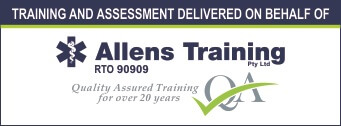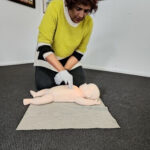Chest Pain
Why do people ignore chest pain symptoms when it’s a possible heart attack?
In the news recently, a number of high powered people have possibly ignored the symptoms of a heart attack and died. We also see this from the general population and is a common story when paramedics arrive at a cardiac arrest event.
The movies/TV may be sending the wrong message as they portray the sudden, intense chest pain that brings you to your knees – if that happened in real life it would be easier to know when to call the paramedics.
In reality, the pain and discomfort caused by a heart attack can be more subtle, especially for women. If you’re having a heart attack, prompt medical attention may help protect your heart muscle from permanent damage, and perhaps save your life.
So the general first aid rule is to treat all unexplained chest tightness or discomfort as a possible heart attack. If movement does not increase the pain (ruling out muscle or rib problems) then we should take this first sign of an heart attack seriously.
A myocardial infarction (commonly called a heart attack) is an extremely dangerous condition caused by a lack of blood flow to your heart muscle. The lack of blood flow can occur because of many different factors but is usually related to a blockage in one or more of your heart’s arteries.
Chest pain or discomfort is the most common sign of heart attack in both men and women. However, women are reportedly more likely than men to experience the less obvious symptoms. Maybe they have a greater pain threshold than men. As soon as heart attack symptoms begin, research shows that chewing an aspirin (if no allergy exists) can be beneficial since this common drug has an anti-clotting effect in the bloodstream. This is a great idea whilst waiting for the paramedics to arrive.
Heart attack symptoms can range from mild discomfort to gripping pain. Many people put off seeking medical attention, blaming indigestion or not recognizing the signs. Seek medical attention immediately if you experience any of these heart attack symptoms:
A mild to severe feeling of pressure, squeezing, fullness or pain in the center or left side of the chest that lasts more than a few minutes or goes away and comes back
- Discomfort in one or both arms, the back, neck, jaw or upper part of the stomach
- Shortness of breath, with or without chest discomfort or pain
- Nausea, vomiting or sudden dizziness
- Cold sweats
It’s a subject that would be good to talk to the family over dinner or in the workplace as often this is seen as an older person’s issue however younger people as well are dying from the heart attacks.
To help your family or workplace, a free chest pain first aid chart is available from this link below.






